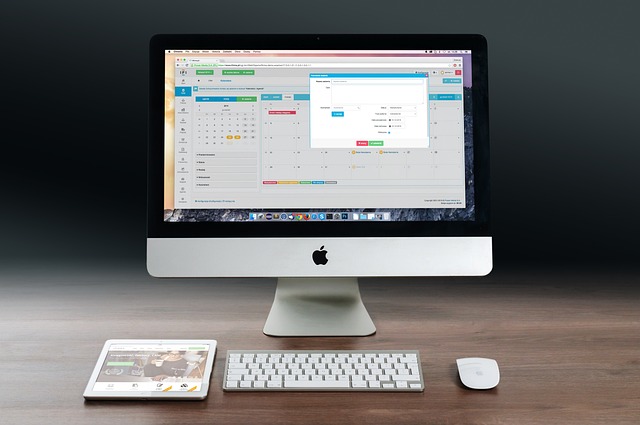Still using the Windows 7 operating system on your computer? Although Windows 10 has been around since its release in 2015, many small businesses are still using Windows 7. It is time to start upgrading to Windows 10 since Microsoft will no longer support Windows 7 in 2020.
How Do Business Owners Know if their Computers are on Windows 7?
The simplest way to tell if a computer is on Windows 7 is to look at the bottom left of the screen at the start button. If the Windows button is rainbow colored and enclosed in a circle, it is on Windows 7.![]() If the Windows symbol is white without a circle, it is on Windows 10.
If the Windows symbol is white without a circle, it is on Windows 10.![]() To find out for certain, click start-control panel-system. At the top of the system information page, it will list the version of Windows.
To find out for certain, click start-control panel-system. At the top of the system information page, it will list the version of Windows.

Why Upgrade?
There are many new additions to Windows 10 that make everyday use easier, faster and more convenient. Even more important reasons to upgrade though are security, compliance, compatibility and its free.
Security
Windows Support states, “An unsupported version of Windows will no longer receive software updates from Windows Update. These updates include security updates that can help protect your PC from harmful viruses, spyware, and other malicious software which can steal your personal information. Windows Update also installs the latest software updates to improve the reliability of Windows—such as new drivers for your hardware.” So although your computer will still run, it will be more susceptible to potentially dangerous viruses. One of the best defenses against viruses, malware and ransomware is keeping the computer updated.
Compliance
Healthcare providers or any business that processes, stores or transmits credit card information are required to be HIPAA and PCI compliant. In order to be compliant, each business must utilize a supported operating system. Supported operating systems are continually updated with patches to keep threats to the computer’s security at bay. If businesses do not start upgrading to Windows 10, holes in the security shield will be left open. Consequently, there is a potential for others to access private patient and credit card information. Upgrading to Windows 10, will keep computers more secure and, along with other security measures, will help with compliance.
Compatibility
Newer software and hardware will require Windows 10 to work. Therefore, upgrading to Windows 10 allows businesses to use required software now and in the future.
No cost
Microsoft has offered free upgrades to Windows 10 in the past and then discontinued it. It is now available again at no cost. It is unknown when Microsoft will start charging for the upgrade again. So it is a great time to take advantage of the free upgrade to cut potential costs.
Special considerations
Time
Upgrading to Windows 10 can take each computer about 3 hours to complete depending on processor speed and memory. It is a simple process but does take someone to monitor it. Creating a plan for how to free up a business computer for this amount of time can be helpful to avoid downtime.
Memory
In order to complete the upgrade, the computer must have at least 10 GB of free space on the hard drive. Checking the memory ahead of time will prevent any time lost since the upgrade to Windows 10 will fail without available memory.
Specialty Software
Healthcare providers and other businesses use many different types of software and equipment that is compatible with different operating systems. Checking the compatibility first will save the company a headache afterwards if the software is not compatible with Windows 10.
Backing Up Data
It is important to always back up data on a regular basis and this is good idea before upgrading any software or operating system. While upgrading to Windows 10, all files stay on the computer by making the appropriate selections during the process. Backing up is still a good precaution since it is better to be safe than sorry.
Older computers
Windows 10 was released in 2015 so many computers that have Windows 7 operating systems are now 4-6 years old. As computers age, they do not work as well and may not take the upgrade successfully. Depending on the situation, it may be worthwhile to buy a new computer with Windows 10 already installed.
Ready to Start Upgrading to Windows 10?
After checking the special considerations and creating a plan for upgrading to Windows 10, follow these easy steps to upgrade.
- Download the Media Creation Tool from Microsoft’s website.
- Follow the prompts to download and then install. Make sure to select keep personal files and apps.
- Wait for the computer to restart several times and then sign back in on the logon page. The page will look different now that it’s on Windows 10. Then the computer will finish loading the new operating system.
- Congratulations! The computer will now continue to be secure and compliant with Windows 10.
Project Planning and Troubleshooting
Computers with different software installed and in various environments upgrade differently. Sometimes a computer will need additional assistance to overcome barriers to the upgrade. It Ninjas works with many healthcare providers and small to medium sized businesses to plan out, implement and overcome barriers to upgrading to Windows 10. These upgrade implementations keep businesses more secure and compliant so businesses can concentrate on their missions versus worrying about the security of their networks.





